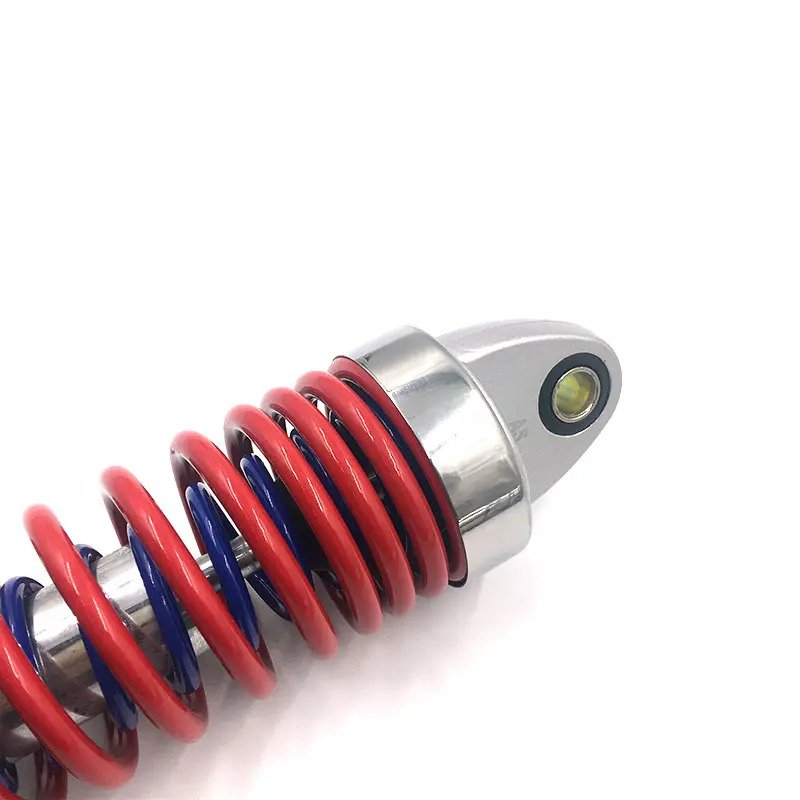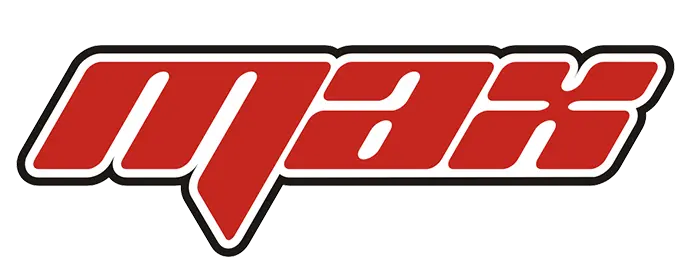Motorcycle shock absorbers are critical components that directly impact your riding experience, safety, and vehicle performance. This comprehensive guide explores the fundamental workings of motorcycle shock absorbers, their expected lifespan, diagnostic techniques for identifying worn components, and essential maintenance practices. Whether you’re riding a CG125, GN125, AX100, or any other motorcycle model, understanding your shock absorber system will help you make informed decisions about maintenance and upgrades.
Table of Contents
How Motorcycle Shock Absorbers Work

A motorcycle shock absorber operates on the principle of hydraulic damping, converting kinetic energy from road impacts into thermal energy through controlled fluid movement. The system consists of several critical components working in harmony to provide smooth suspension performance.
The piston rod serves as the central component, typically featuring a mirror-surface treatment with hard chrome plating that achieves tensile and compressive strength above 800 MPa. This chrome-plated surface treatment ensures durability and prevents corrosion, making it essential for long-term performance.
| Component | Function | Material Specification |
|---|---|---|
| Piston Rod | Transfers suspension movement | 37Mn5 with Chrome/Nickel plating |
| Outer Tube | Houses internal components | Aluminum AC2B-F with powder coating |
| Oil Seal | Prevents fluid leakage | NOK brand with 2,000,000+ cycle life |
| Hydraulic Fluid | Provides damping resistance | Specialized shock absorber oil |
During compression, the piston moves through hydraulic fluid, creating resistance that controls the suspension’s movement. The valving system regulates fluid flow, allowing for different damping characteristics during compression and rebound phases. This controlled movement prevents excessive bouncing and maintains tire contact with the road surface.
Modern motorcycle shock absorbers often incorporate adjustable features, allowing riders to fine-tune compression and rebound damping based on riding conditions and personal preferences. The precision engineering involved ensures consistent performance across various operating temperatures and riding environments.
OEM Shock Absorber Lifespan and Performance
The lifespan of OEM (Original Equipment Manufacturer) motorcycle shock absorbers varies significantly based on several factors, including riding conditions, maintenance practices, and component quality. Understanding these variables helps set realistic expectations for replacement intervals.
Typical OEM Shock Absorber Lifespan:
- Standard riding conditions: 20,000-40,000 miles (32,000-64,000 km)
- Harsh conditions (off-road, heavy loads): 15,000-25,000 miles (24,000-40,000 km)
- Optimal conditions (smooth roads, regular maintenance): 40,000-60,000 miles (64,000-96,000 km)
Several factors influence OEM shock absorber longevity:
Environmental Conditions: Exposure to salt, moisture, extreme temperatures, and road debris accelerates wear. Motorcycles used in coastal areas or regions with harsh winters typically experience shorter shock absorber lifespans due to increased corrosion risks.
Riding Style: Aggressive riding, frequent hard braking, and high-speed cornering place additional stress on suspension components. Conversely, smooth, predictable riding patterns extend component life significantly.
Load Factors: Carrying heavy loads or passengers regularly exceeds design specifications, leading to premature wear. The suspension system must work harder to maintain proper damping characteristics under increased weight.
Quality OEM shock absorbers, such as those designed for popular models like the GN125, AX100, and CG125, typically feature robust construction with high-tensile performance specifications. These components undergo rigorous quality control processes following ISO9001/TS16949:2002 standards to ensure consistent performance throughout their service life.
Identifying Bad Motorcycle Shocks Without Removal

Recognizing worn shock absorbers without disassembly requires systematic observation of performance indicators and visual inspection techniques. Early detection prevents safety hazards and maintains optimal riding experience.
Performance-Based Indicators:
Excessive Bouncing: After hitting a bump or pothole, the motorcycle should settle quickly without continued bouncing. If the bike continues to oscillate more than once or twice, the shock absorbers likely have insufficient damping capability.
Uneven Tire Wear: Worn shock absorbers fail to maintain consistent tire contact with the road surface, resulting in irregular wear patterns. Look for cupping, scalloping, or unusual wear on tire edges, which indicate inadequate suspension control.
Poor Handling Characteristics: Degraded shock absorbers manifest through reduced cornering stability, increased body roll, and unpredictable handling responses. The motorcycle may feel “floaty” or disconnected from road surface feedback.
Visual Inspection Techniques:
| Inspection Point | What to Look For | Significance |
|---|---|---|
| Oil Seals | Fluid leakage, cracking, damage | Indicates internal seal failure |
| Piston Rod | Scratches, corrosion, bending | Compromises sealing and performance |
| Mounting Points | Excessive play, worn bushings | Affects suspension geometry |
| External Condition | Dents, corrosion, damage | May indicate internal damage |
Functional Testing Methods:
The “bounce test” provides quick assessment capabilities. Push down firmly on the motorcycle’s seat or handlebars and release quickly. Quality shock absorbers should return to normal position with minimal oscillation. Multiple bounces indicate worn damping components.
During normal riding, pay attention to how the motorcycle responds to road irregularities. Properly functioning shock absorbers should provide controlled, predictable responses without harsh impacts or excessive movement.
Understanding Shock Absorber Components and Materials
Modern motorcycle shock absorbers incorporate advanced materials and precision engineering to deliver reliable performance under demanding conditions. Understanding these components helps appreciate the complexity and importance of quality manufacturing.
Piston Rod Technology: The piston rod represents the most critical component, requiring exceptional strength and surface quality. High-quality units feature 37Mn5 steel construction with specialized surface treatments including nickel and chrome plating. This combination provides superior corrosion resistance and wear characteristics essential for long-term reliability.
The chrome plating process creates a mirror-surface finish that minimizes friction and prevents seal damage. This treatment typically achieves hardness levels exceeding HRC 60, ensuring resistance to scratching and wear from normal operation.
Sealing Systems: Premium shock absorbers utilize high-quality oil seals from reputable manufacturers like NOK, designed for extended service life exceeding 2,000,000 cycles. These seals prevent hydraulic fluid leakage while maintaining smooth piston rod movement.
The sealing system includes multiple components: primary seals, secondary backup seals, and dust seals. Each serves specific functions in maintaining system integrity and preventing contamination that could compromise performance.
Hydraulic Fluid Specifications: Specialized shock absorber fluids provide consistent viscosity characteristics across temperature ranges. These fluids resist foam formation, maintain stable damping characteristics, and provide long-term component protection.
Quality manufacturers specify particular fluid types and change intervals to maintain optimal performance. Using incorrect fluids or extending service intervals beyond recommendations can result in performance degradation and premature component failure.
Maintenance Best Practices for Extended Lifespan
Proper maintenance significantly extends shock absorber lifespan while maintaining optimal performance characteristics. Regular inspection and preventive care prevent minor issues from developing into major problems requiring complete replacement.
Regular Inspection Schedule:
- Weekly: Visual inspection for obvious leaks or damage
- Monthly: Detailed examination of seals, mounting points, and external condition
- Seasonally: Comprehensive performance evaluation and cleaning
- Annually: Professional inspection with possible service intervals
Cleaning and Protection: Keep shock absorbers clean and free from road debris, salt, and corrosive materials. Use appropriate cleaning solutions that won’t damage seals or surface treatments. Apply protective coatings to exposed metal surfaces in harsh environments.
For motorcycles equipped with rubber boots, ensure these protective covers remain intact and properly positioned. Damaged boots allow contamination to reach critical sealing surfaces, accelerating wear and potential failure.
Operating Considerations: Avoid exceeding manufacturer weight limits and operating specifications. Gradual warm-up periods allow hydraulic fluids to reach optimal operating temperatures, particularly important in cold weather conditions.
When storing motorcycles for extended periods, support the vehicle to minimize shock absorber compression. This prevents seal distortion and maintains proper fluid distribution within the system.
Choosing Quality Replacement Shock Absorbers
Selecting appropriate replacement shock absorbers requires careful consideration of performance requirements, quality standards, and compatibility factors. Quality manufacturers provide comprehensive specifications and support to ensure optimal fitment and performance.
OEM vs. Aftermarket Considerations: Original equipment manufacturers design shock absorbers specifically for particular motorcycle models, ensuring proper geometry and performance characteristics. However, quality aftermarket alternatives can provide superior performance and durability when properly selected.
Max Auto Parts specializes in producing high-quality shock absorbers for popular motorcycle models including CG125, GN125, AX100, JH70, GY6, and WY125. Our manufacturing processes follow strict TS16949 certification requirements, ensuring consistent quality and reliability.
Our motorcycle shock absorbers feature:
- Hi-tensile performance construction with aluminum AC2B-F outer tubes
- Mirror-surface chrome plated piston rods with 37Mn5 material specification
- NOK brand oil seals with extended service life ratings
- Comprehensive quality control testing including metallography analysis
- Protective rubber boots to maintain cleanliness and extend component life
Quality Assurance Standards: Reputable manufacturers provide detailed specifications, testing data, and quality certifications. Look for companies that offer comprehensive inspection services including PPAP reports, RT, UT, MPI, and WPS & PQR documentation.
| Quality Indicator | Standard Specification | Max Auto Parts Standard |
|---|---|---|
| Surface Hardness | HRC 45-55 | HRC 60+ |
| Tensile Strength | 600-700 MPa | 800+ MPa |
| Seal Life Cycles | 1,000,000 | 2,000,000+ |
| Warranty Period | 6-12 months | 12 months |
Technical Support and Service: Choose manufacturers that provide comprehensive technical support, including installation guidance, troubleshooting assistance, and maintenance recommendations. This support ensures proper installation and optimal long-term performance.
Max Auto Parts maintains experienced engineering teams with extensive expertise in shock absorber technology. We provide not only quality products but also technical support, production supervision, and quality tracking services to ensure customer satisfaction.
Contact Information for Expert Assistance:
For professional guidance on selecting appropriate shock absorbers for your motorcycle application, contact our technical team:
- Email: sales@maxautoparts.cn
- Phone: +86 15267273091
- Address: Building No.2, Jinshan Road No.788, Jiangbei District, Ningbo City, Zhejiang, China
- Website: https://www.nbmaxauto.com/
- Business Hours: Monday-Friday: 9am to 6pm (Saturday, Sunday: Closed)
Our commitment to quality, backed by TS16949 certification and comprehensive testing capabilities, ensures that every shock absorber meets rigorous performance standards. Whether you need OEM replacement parts or high-performance upgrades, our experienced team provides expert guidance and reliable solutions for your motorcycle suspension needs.
Understanding motorcycle shock absorber operation, maintenance requirements, and quality indicators empowers riders to make informed decisions about their suspension systems. Regular maintenance, proper inspection techniques, and quality replacement components ensure safe, comfortable, and enjoyable riding experiences for years to come.
